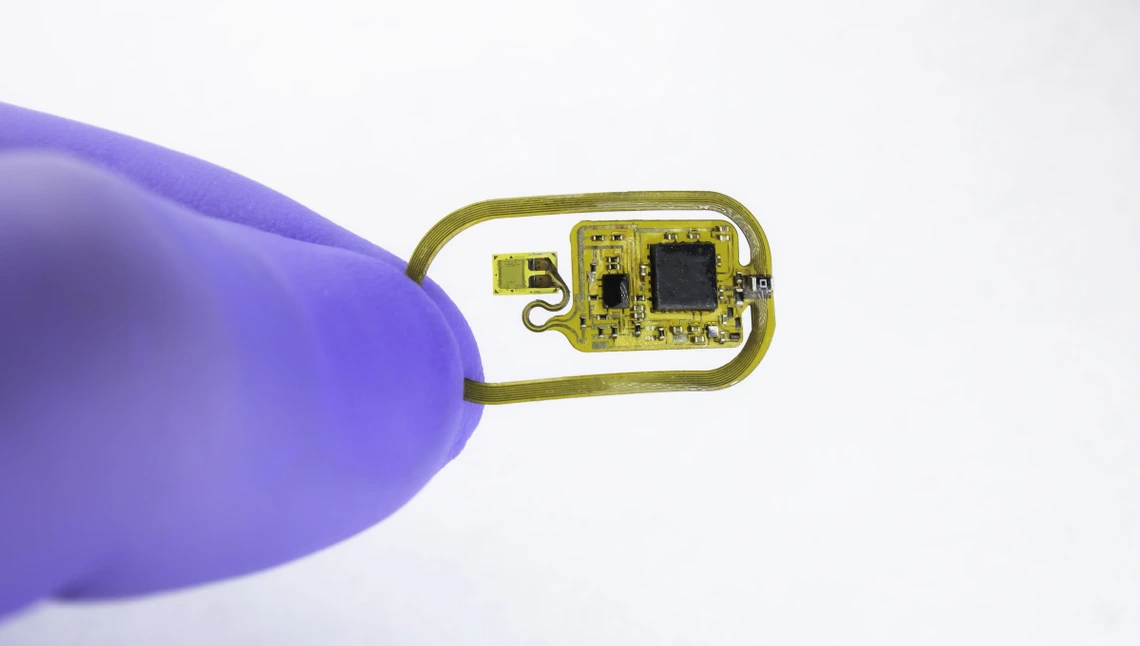Gutruf Discusses 'Osseosurface Electronics' with SmartTRAK

BME assistant professor Philipp Gutruf specializes in bioelectronics that integrate with the human body. One of his recent developments is "osseosurface electronics" or, more simply, computers that grow to the surface of the bone. These ultra-thin wireless devices could someday help physicians monitor bone health and healing over long periods. Gutruf recently discussed the history and future of these devices with SmartTRAK.
"For our technology, we try to solve some of the major problems in obtaining data from the bone directly; in general, bone health," Gutruf said. "Imagine a scenario. For example, you have osteoporosis, you had a fall, you go into surgery and you'll get that bone fixed, right? But the chances of refracture is pretty high. You get Dexa scans all the time. They're not super reliable. It's hard to figure out when to take the hardware out, how much weight you can put on and when, which negatively impacts your general health. But, also, the diagnosis is pretty expensive and complicated. So, we were approached from folks in the ortho world that really wanted to have a capability to get real-time information from the bone and figure out what kind of health status we have of that particular organ system."
